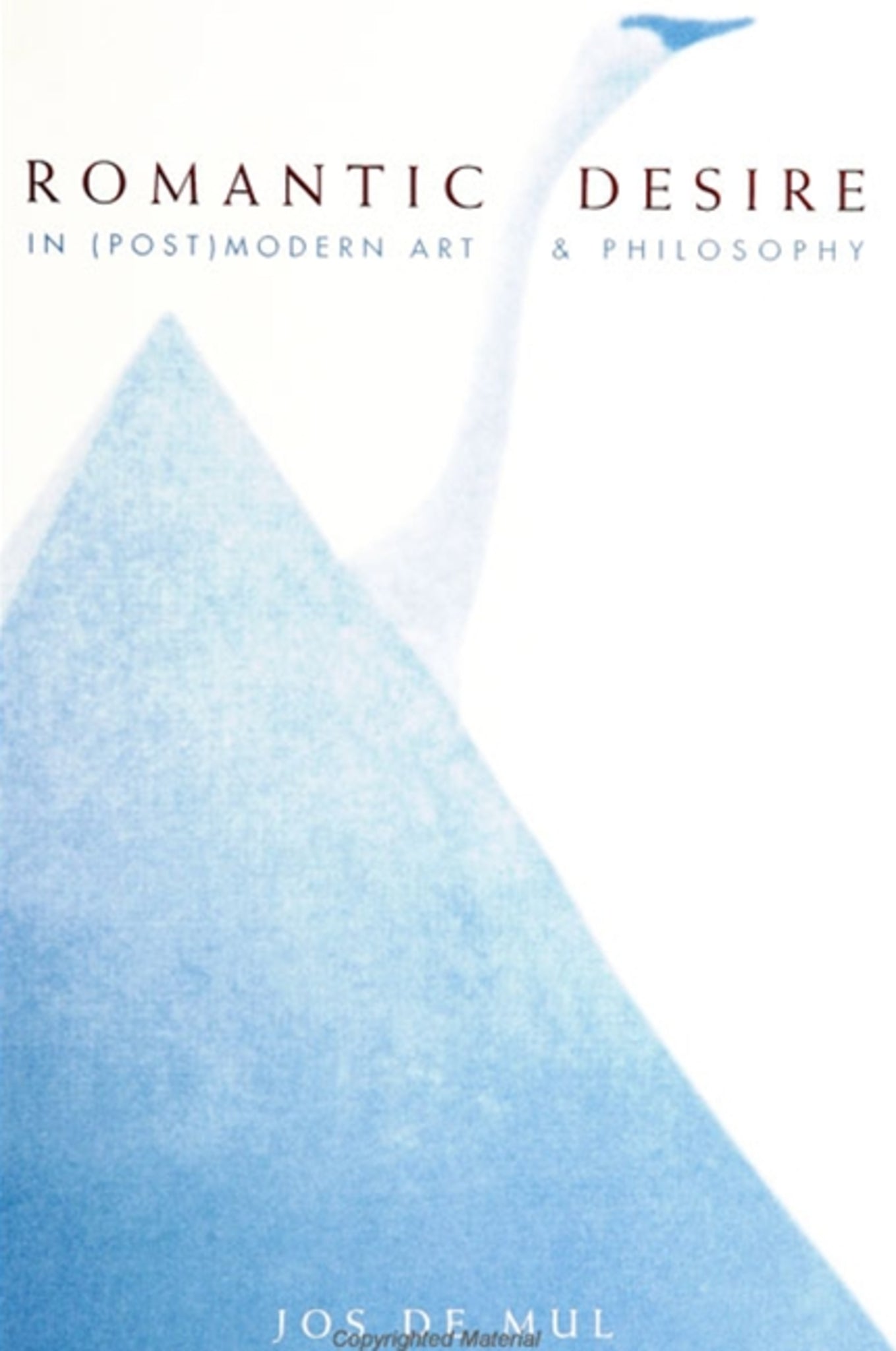We're sorry. An error has occurred
Please cancel or retry.
Romantic Desire in (Post)modern Art and Philosophy

Some error occured while loading the Quick View. Please close the Quick View and try reloading the page.
Couldn't load pickup availability
- Format:
-
16 July 1999

An erudite and wide-ranging discussion of postmodernism and romanticism in twentieth-century art and philosophy.
In this erudite and wide-ranging discussion of postmodernism and romanticism in twentieth-century art and philosophy, Jos de Mul sheds a fascinating light on the ambivalent character of our present culture, which oscillates between modern enthusiasm and postmodern irony. Along the way, he engages the work of such thinkers as Nietzsche, Freud, Heidegger, Habermas, Lacan, Barthes, and Derrida; visual artists Magritte and Stella; poets George and Coleridge; and composers Schönberg, Cage, and Reich, among others, providing a sort of intellectual history of Romantic, Modernist, and Postmodernist "tempers."


"Jos de Mul does a beautiful job of summarizing in compressed form some of the most vexed texts and ideas in contemporary theory; as a writer, he is a fine teacher. He is also an effective critic of the arts, especially painting and music. I learned and re-learned a great deal in reading this book. If a student were to ask 'What book can I read that not only explains what these people whose names I hear all the time actually say, but also demonstrates the significance of their ideas in practice?' I would be tempted to refer him or her to this book." — Jean-Pierre Mileur, University of California, Riverside
"A fine, efficient introduction to a wealth of texts and demanding theoretical issues that few critics seem to know as well as de Mul." — Thomas Pfau, author of Idealism and the Endgame of Theory: Three Essays by F. W. J. Schelling
List of Illustrations
List of Abbreviations
Preface
Acknowledgments
Introduction
0.1 The Kantian origins of modern aesthetics
0.2 The unfulfillable Romantic desire
0.3 Romantic irony
0.4 The (post)modernism debate
0.5 The foundations of modernism
0.6 The postmodern Verwindung of modernism
0.7 The topicality of Romantic desire
0.8 The Romantic image of man
0.9 Survey of the book's contents
1. Frozen Metaphors
1.1 A metaphot of winter: the winter of metaphor
1.2 Gudmundsson's Great Poem
1.3 Nietzsche and metaphor
1.4 Fossilization and freezing
1.5 The transcendental metaphor
1.6 Tragic wisdom
1.7 Socratic truth and nihilism
1.8 The ambivalence of Romantic desire
1.9 The music-making Socrates as übermensch
1.10 It's so cold in Alaska
2. The Path of Autonomy
2.1 Piaget's studies of intellectual development and rationalization
2.2 Rationalization and progress in art
2.3 Stella and the completion of modern art
2.4 The other side of rationalization: the dadaist and surrealist revolt
2.5 Rationalization and modernism in Frankfurt
2.6 Stella as postmodernist
2.7 From avant-garde to postmodernism: the pyrrhic victory of modern art?
3. The Art of Forgetting
3.1 Metaphysics and aesthetics
3.2 Schopenhauer's aesthetics of music
3.3 Contradictions in Schopenhauer's aesthetics
3.4 Nietzsche's Fragment an sich
3.5 Repetition and forgetting: the music of Steve Reich
3.6 Death through repetition
3.7 Beyond the reality principle?
3.8 The moment of the Eternal Recurrence
4. The First and the Last Word
4.1 The rhetoric of the unconcious
4.2 Speaking language
4.3 The speechless poet
4.4 Heidegger's genealogy of the subject
4.5 Unveiling and concealing Being
4.6 The eternal lack
4.7 The poet on the couch
4.8 Poeticizing and thinking
4.9 From metaphysics to metaphorics: the pyrrhic victory of postmodern philosophy?
5. Disavowal and Representation
5.1 Magritte's pipe: Yes, I know, but still...
5.2 Sexual and aesthetic disavowal
5.3 The perversion of aestheticism
5.4 The phallus as transcendental signifier
5.5 Postmodern schizophrenia
5.6 Superficiality from depth
6. The Oldest Nobility in the World
6.1 Barthes' battle against chance
6.2 The semiology of music and the boundaries of verbal language
6.3 The archaeology of the eighteenth-century semiology of music
6.4 The sonata form and the episteme of man
6.5 The music dominion of the subject
6.6 Barthes' second semiology and the death of the composer
6.7 Cage's total aleatoric
6.8 Nietzsche, Heidegger, and the world of chance
6.9 The Aeolian harp
Afterword: Virtual Romantics
7.1 From Romantic to digital desire
7.2 (Post)modern Romantics
7.3 The (post)modern computer
7.4 Digital dreams
Notes
Bibliography
Name Index
Subject Index



